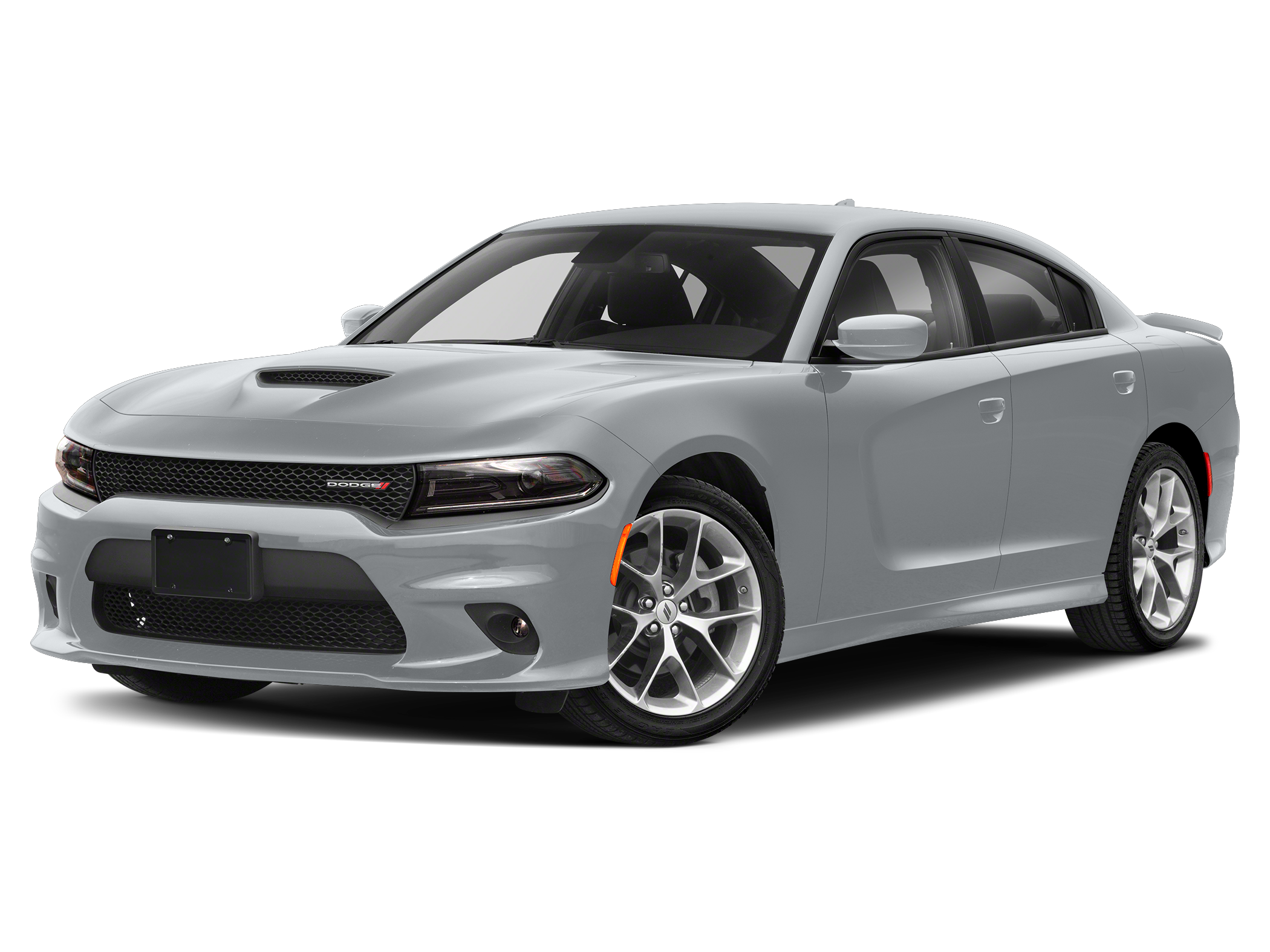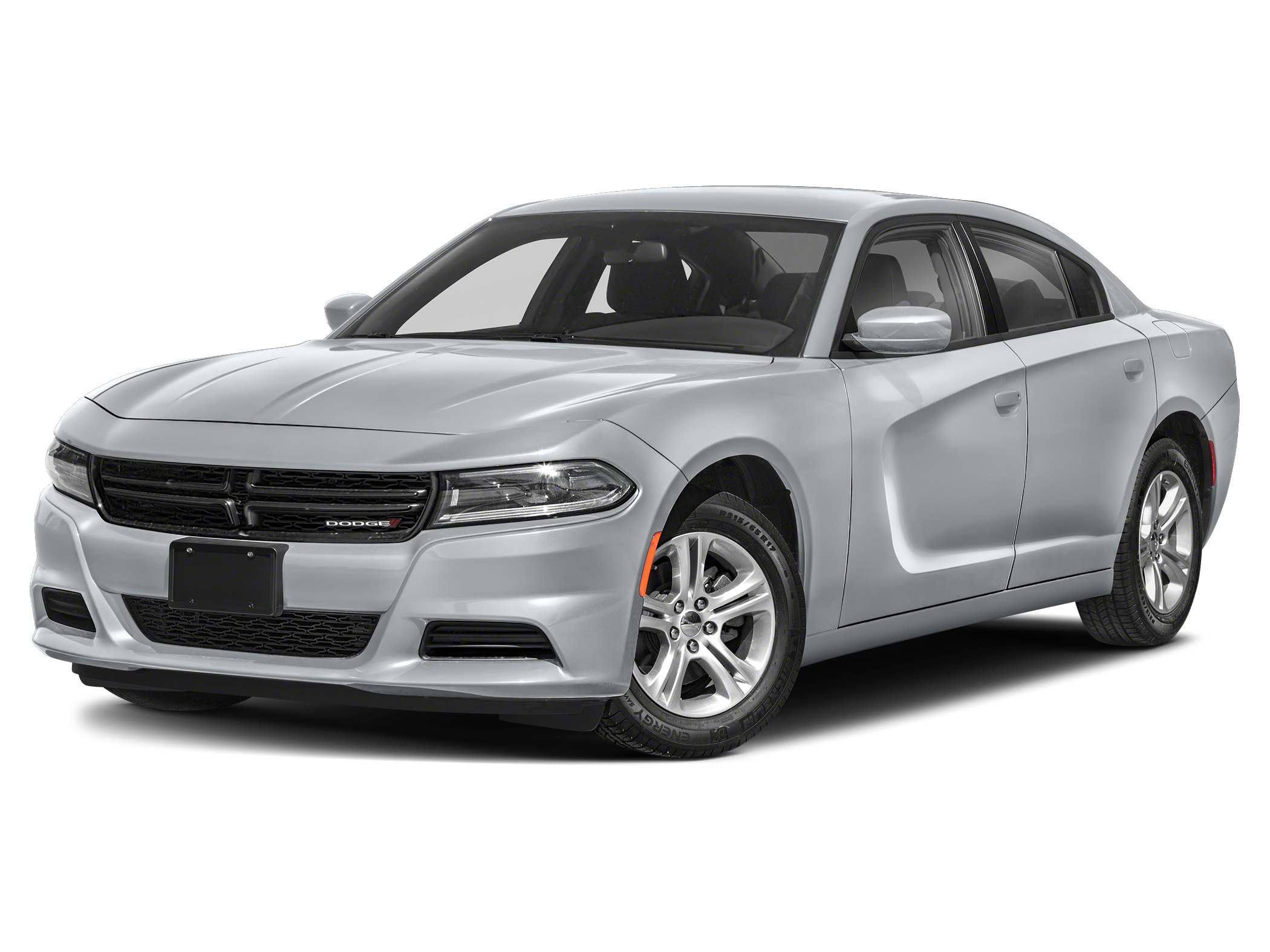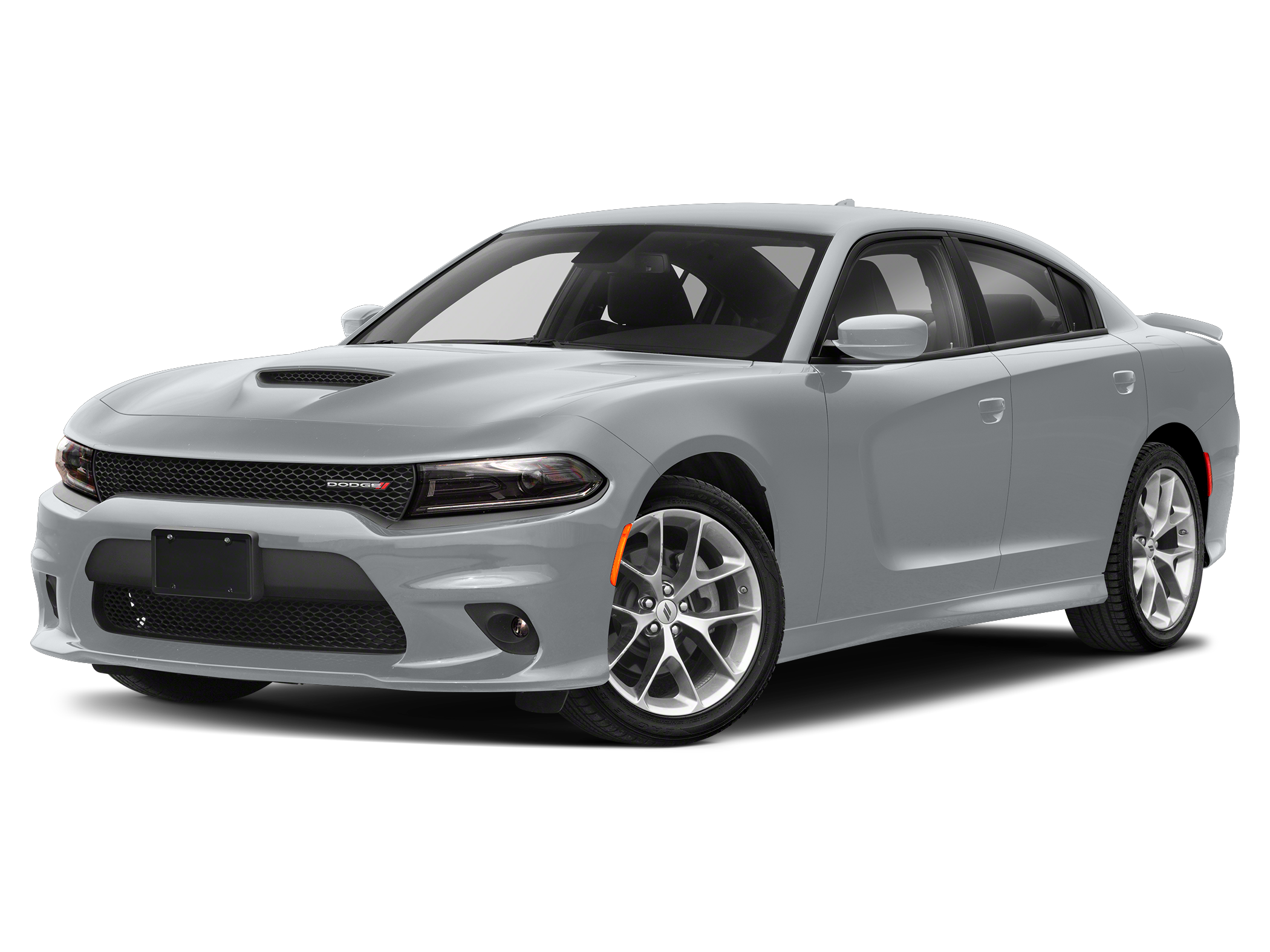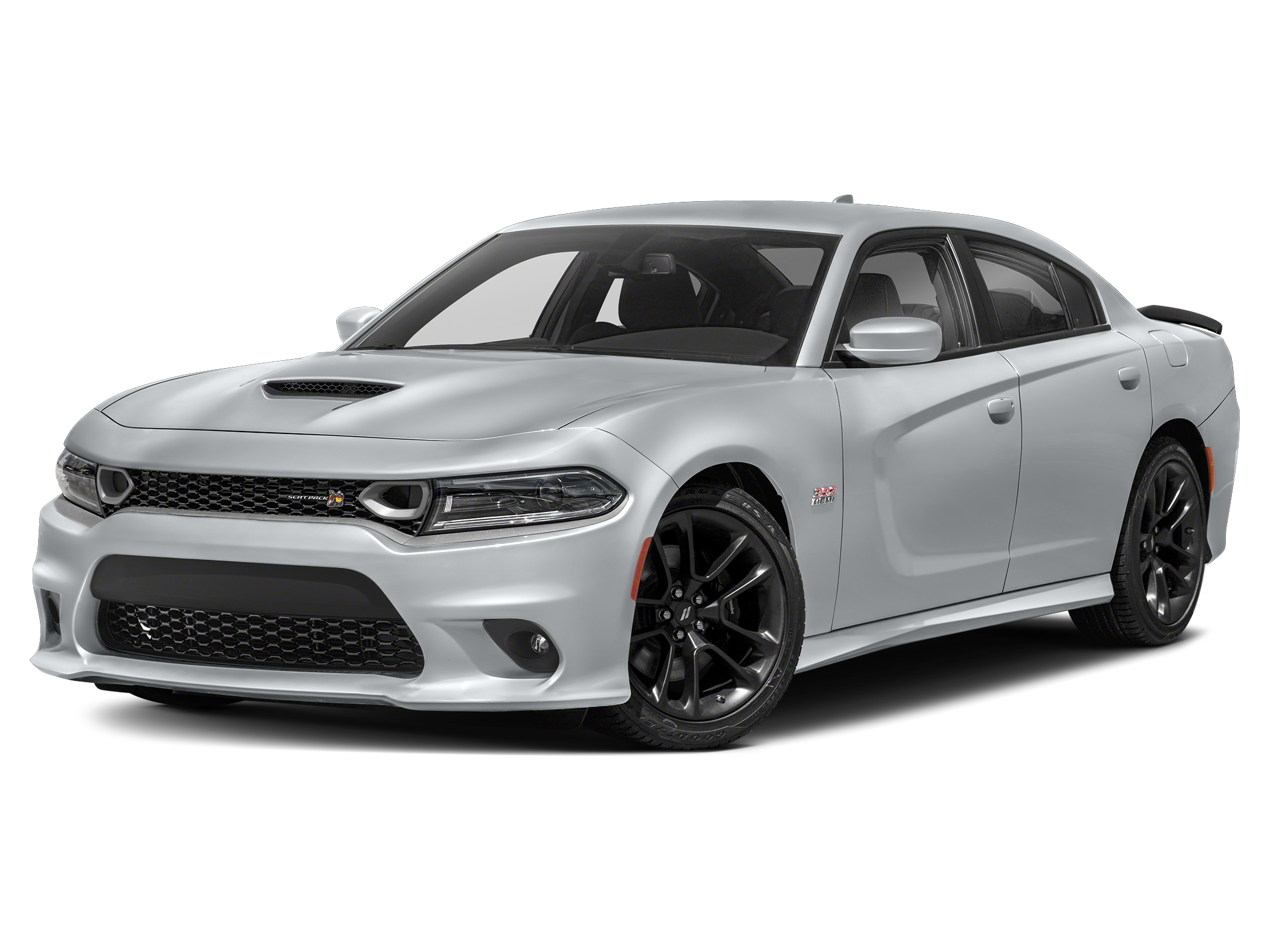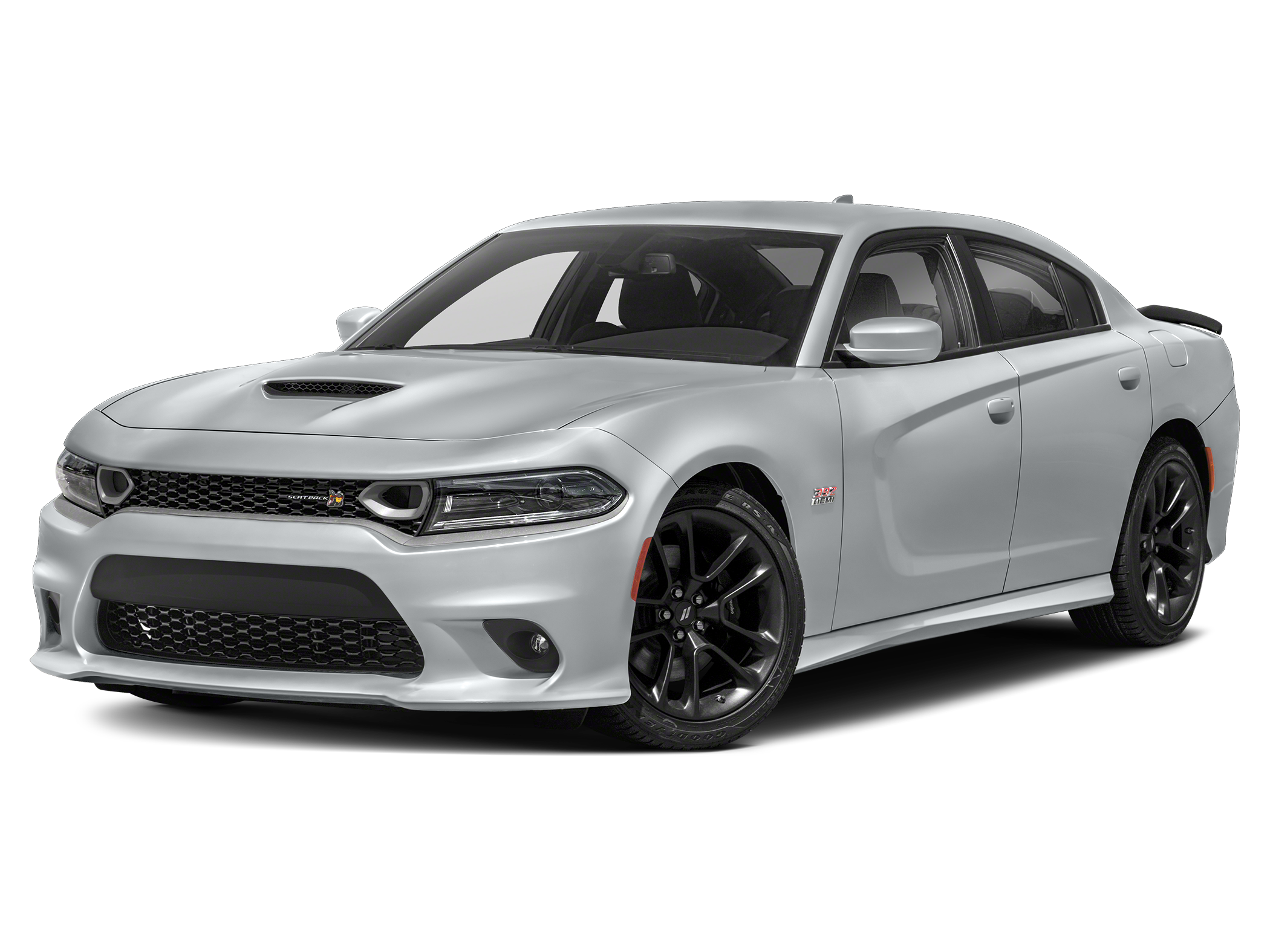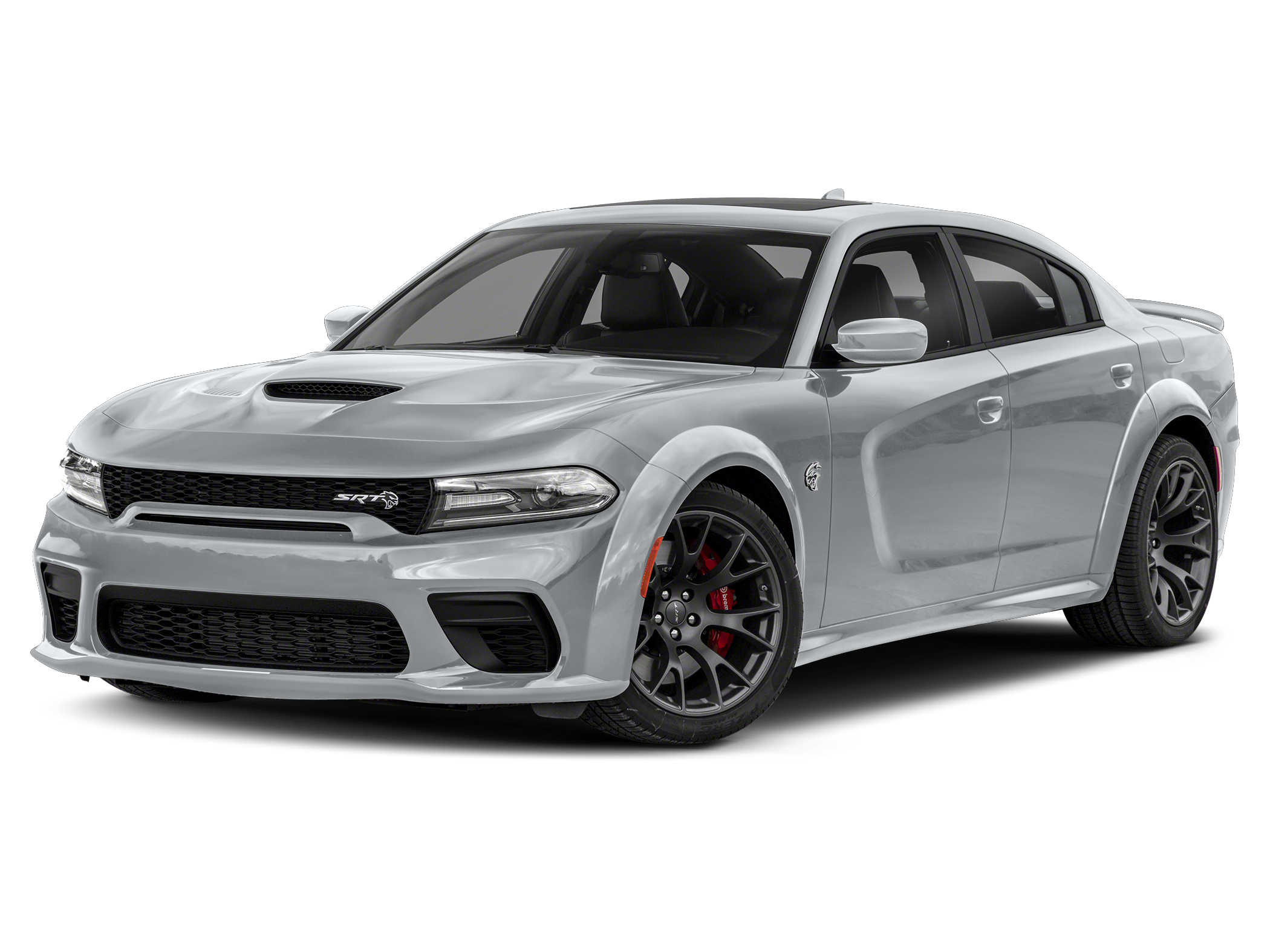Dodge Charger SXT Feature Overview
Explore trim options
Explore trim options
REVIEWS AND RATINGS
What others are saying
REVIEW AND TEST DRIVE
2022 Dodge Charger Scat Pack: Feeding Your Need for Speed
Dodge builds one of the fastest and most powerful mass-production sedans on the planet, but the sweet spot in the lineup might be the one without a supercharger.
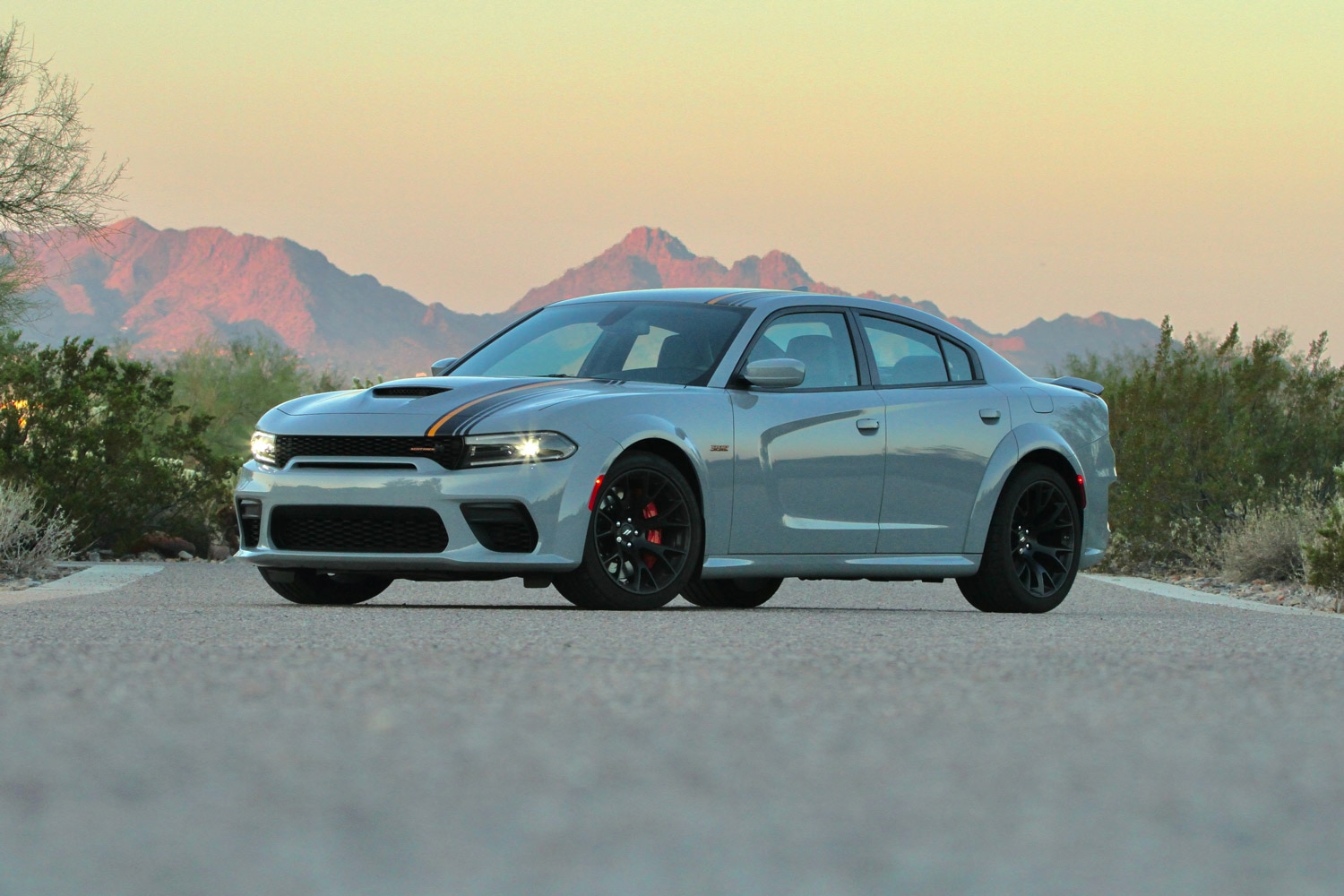 Jim Resnick
Jim Resnick
The modern muscle car is nearly extinct, but a handful are left, and the 2022 Dodge Charger Scat Pack Widebody is one of them. A powerful V8 engine, a generous trunk, and enough room inside for four or five adults all mean that the old muscle-car equation lives on in the 2022 Charger.
While the name itself goes back to the 1960s — as does the soundtrack of the three available V8 engines — this Charger brings a level of technology unimaginable when the first Charger hit the streets in 1966. Yet, where the old muscle cars of the 1960s usually struggled badly under hard braking or when the road got twisty, the Charger in Scat Pack Widebody form doesn’t. It handles and stops nearly as well as some thoroughbred sport sedans costing tens of thousands more, such as the BMW M5 or Mercedes-Benz E63 AMG. Yet, Dodge offers a truly monstrous Charger Hellcat with up to 797 hp, making the Scat Pack’s 485 hp only half-monstrous.
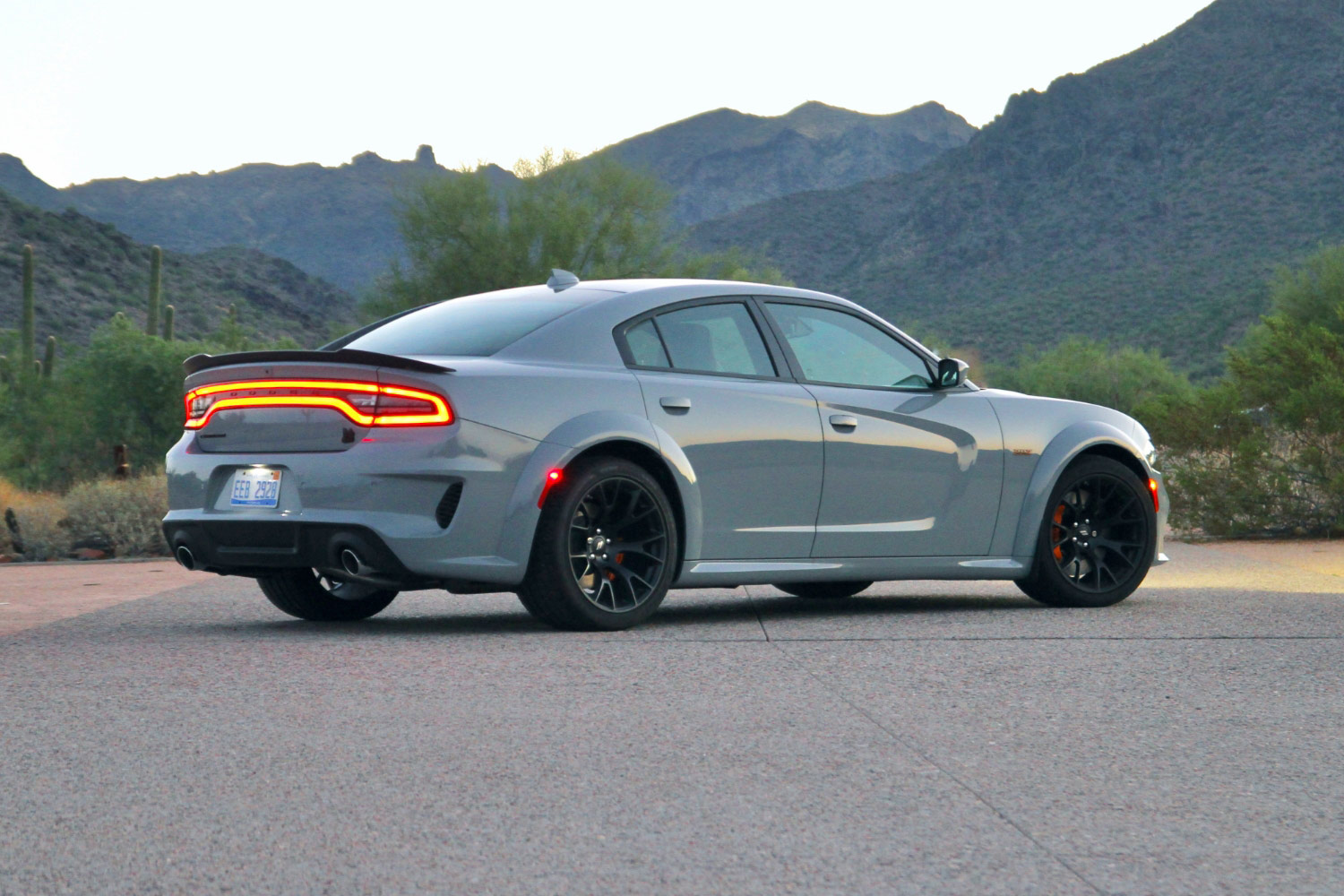 Jim Resnick
Jim Resnick
The current Charger family debuted in 2006 and received a significant update in 2011. Since then, the Charger has sprouted multiple special-edition models and tech updates to keep it relevant to current buyers. Despite changes, the fundamental character of the Charger as a traditional front-engine, rear-drive, four-door sedan offering a bevy of potent engine options lives on.
While size and price comparisons are important things to focus on in the car-shopping game, it’s difficult to compare a Dodge Charger Scat Pack Widebody with 485 hp and giant sticky tires to more conventional cars in its size and price class. Competitors based on cabin and trunk size include sedans such as the Nissan Maxima, Toyota Avalon, and Volkswagen Arteon. Few people, however, would consider these finishing-school grads while also contemplating the raucous 485-hp, four-door missile.
Given the impressive performance, you wouldn’t be out of line pairing up the Charger Scat Pack Widebody with the BMW M5 or Mercedes-Benz E63 AMG. Admittedly, the interior doesn’t compete on par with the German sedans, but you’d also pay only about half the price of those two. And at the other end of the price spectrum, the Maxima and Avalon don’t usually elicit the same kind of wry smile on a driver’s face as you get from a few full-throttle moments piloting a V8-powered Charger.
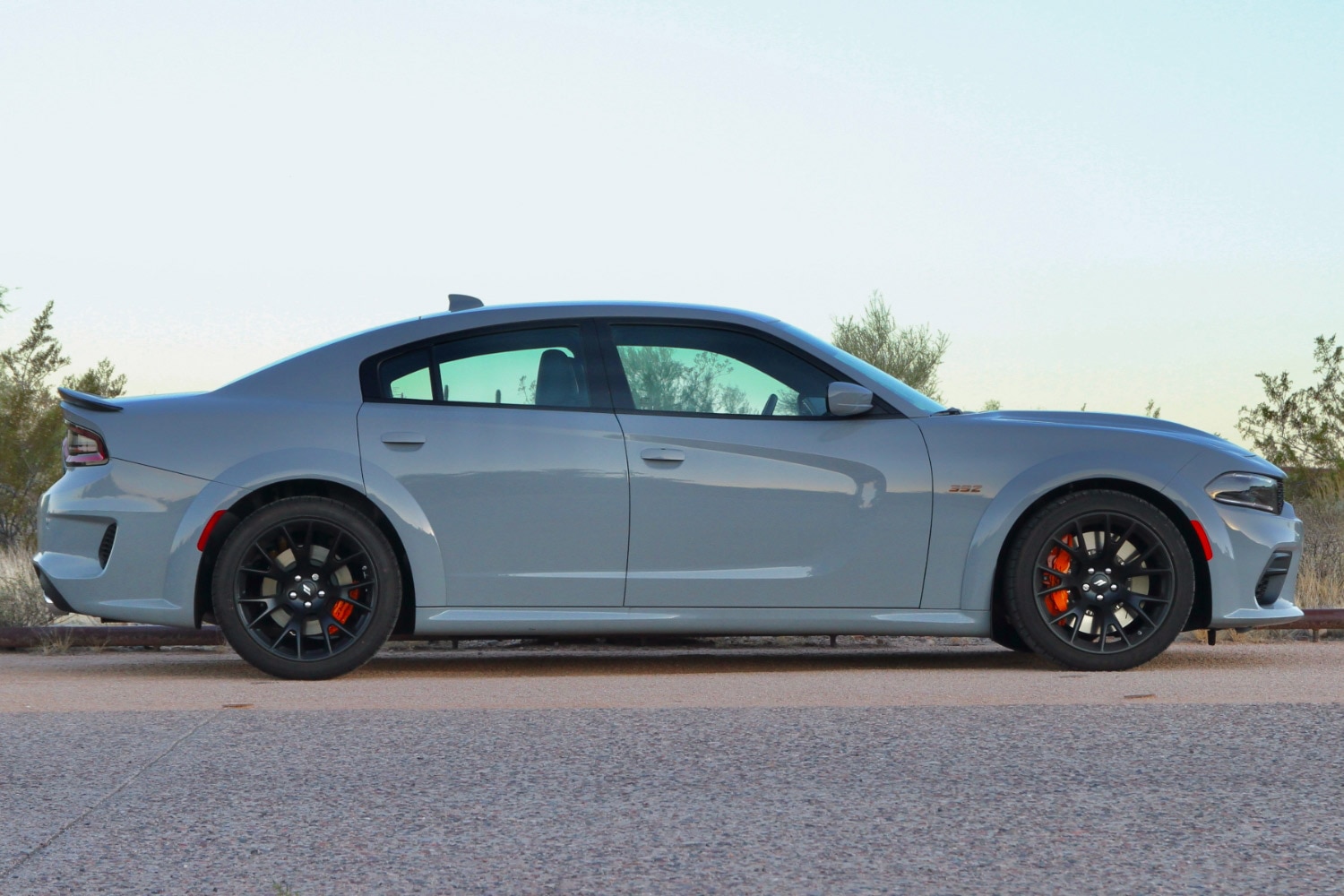 Jim Resnick
Jim Resnick
For this 2022 Dodge Charger review, I test-drove the Scat Pack Widebody in Arizona. The Widebody spec adds adaptive suspension, larger wheels and tires, and giant brakes. The tested example has a suede headliner and carbon fiber accents, ventilated front seats, a native navigation system, and a Harman/Kardon 19-speaker audio system. The total tallied up to a manufacturer’s suggested retail price (MSRP) of $65,995, including a $1,595 destination charge. Dodge provided the vehicle for this Charger Scat Pack Widebody review.
2022 Dodge Charger Scat Pack Review: The Design
With optional paint color names like Hellraisin (purple), Smoke Show (silver), and Go Mango (orange), Dodge shows that even big corporations can have a sense of humor. Also, depending on which version of the Charger you buy, you can dress the car up with different wheels, hood finishes, racing stripes, and more.
 Jim Resnick
Jim Resnick
As you slide into the Charger, you’re met up front by traditional gauges separated by a multi function digital display you can configure to a certain degree. Buttons on the steering wheel give you control over this display and several other functions, such as the cruise-control system.
As a large sedan with broad shoulders and prominent fender flares, the Charger Widebody is big on the outside and reasonably generous on the inside. The front seats are comfortable and supportive but not very adjustable. Lumbar controls don’t offer as much variety as you might expect, and the thigh bolsters do not extend, even manually. I appreciated the test car’s power-adjustable steering column, though, and I found an acceptable driving position for my 6-foot-1-inch frame. Still, longer drives left me wanting a wider range of adjustments to improve comfort.
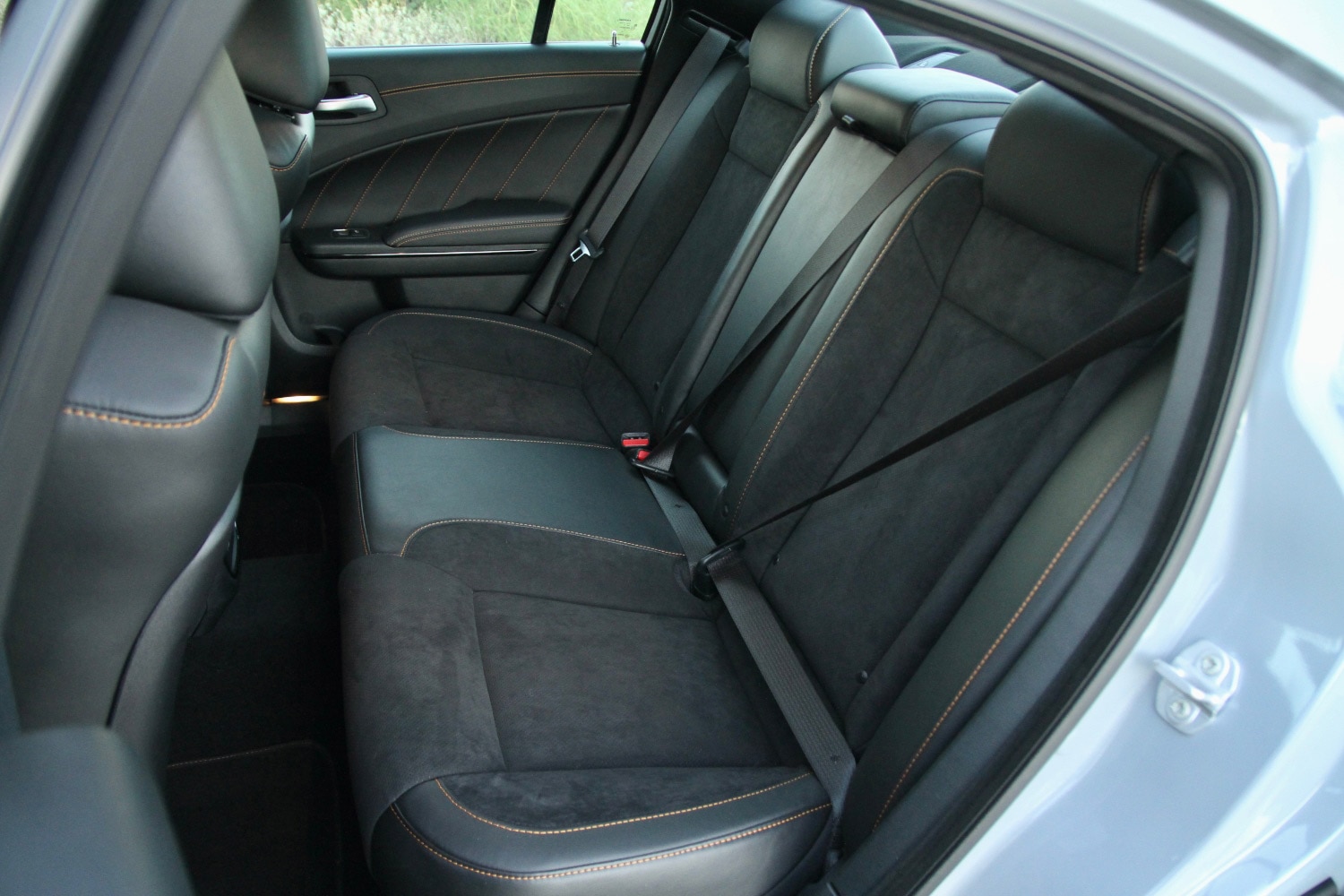 Jim Resnick
Jim Resnick
Despite being a full-size car, rear seat occupants don’t have as much legroom and headroom as you might expect. Furthermore, the back seat is also relatively flat and featureless. Whoever draws the short straw for the middle of the back seat will also have to contend with even less leg room. Dodge places the rear portion of the front center console right where their knees will want to be. That console does, however, house heater controls for the rear seats and two USB ports. The automotive gods giveth and they taketh away.
Fit, finish, switchgear, and the interior equipment’s general look are good, but the Charger’s interior is nothing Mercedes or Lexus need to worry about. However, even though it is not unique or high end, the dash, trim, and various parts that make up everything you touch inside are pieced together well.
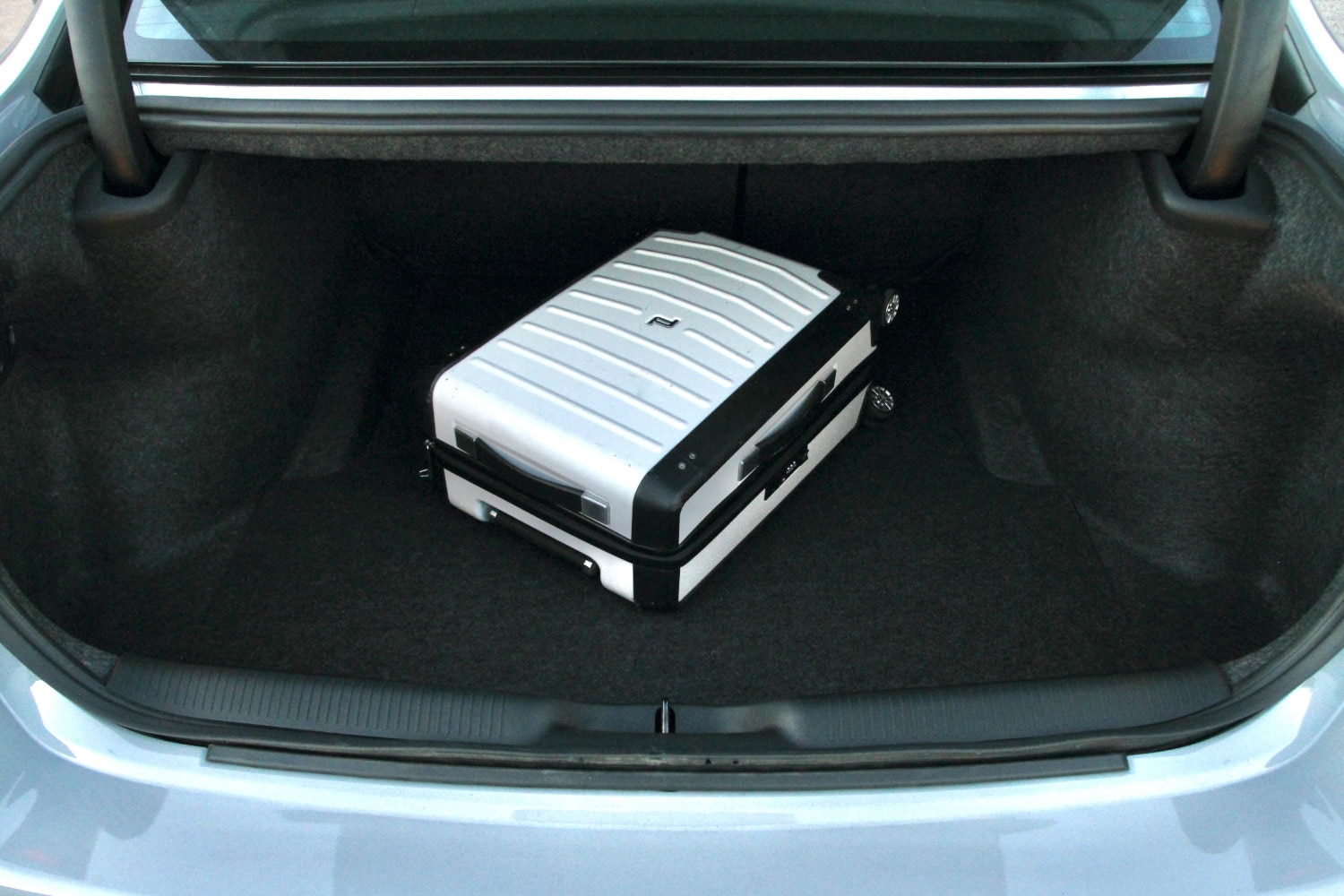 Jim Resnick
Jim Resnick
Interior storage is a bit better than average, with bottle holders in each door, two cupholders in the center (and in the rear center armrest), and a deep bin in the center console. Out back, the trunk offers 16.5 cubic feet of cargo space, which is larger than many family-sized sedans.
2022 Dodge Charger Scat Pack Review: The Technology
As in many Stellantis (Chrysler, Dodge, Jeep, Ram) models, the Charger comes with a Uconnect infotainment system fortified by excellent processing speed. That means your changes from screen page to screen page, or from app to app, occur quickly. And in this age of soft-touch screen buttons for everything under the technological sun, the Charger’s system retains some actual knobs for volume and radio station tuning.
Apple CarPlay and Android Auto are standard and generally work seamlessly, and the head unit rapidly recognizes a phone plugged directly into it — or Bluetoothed in. The only glitch I experienced with the Charger’s Apple integration was a temporary inability to navigate through artist and song menus via the infotainment screen. Unfortunately, Dodge doesn’t offer a wireless mat to charge your smartphone.
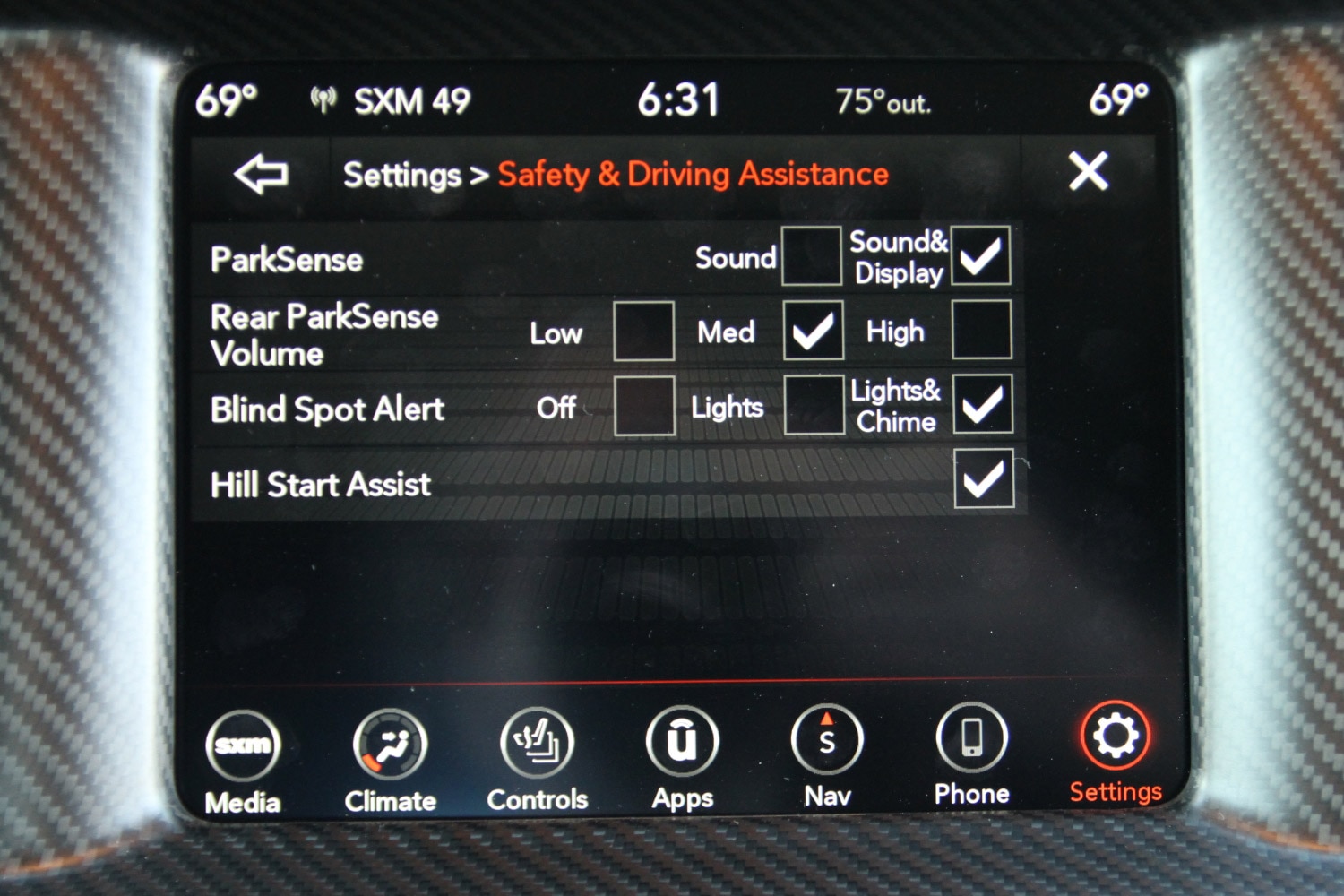 Jim Resnick
Jim Resnick
Uconnect’s voice recognition system is not as easy to use. It quickly understands satellite radio changes and other basic commands, even when speaking at varying sound and clarity levels. But when it comes to navigating, Uconnect can get pretty fussy. For example, it failed when asked to navigate to a town’s city center. “Navigate me to Flagstaff, Arizona” yielded “Tin Cup, Forest.” I have on-air radio and announcer experience, so my diction should be better than most, yet the navigation’s voice recognition is flummoxed relatively easily.
The system prefers a street number, street name, town name, and state, announced in that order. That’s so five years ago. This is clearly a programming issue where most navigation systems have moved on, as have buyer expectations. This part of the Charger system’s age shows itself (even though it still processes input via touchscreen quickly).
Although Dodge offers a Technology Group options package that equips a Charger with adaptive cruise control, forward-collision warning, automatic emergency braking, lane-departure warning, and lane-keeping assist, my test vehicle did not have it. Instead, I got by with the Plus Group package, which includes blind-spot monitoring, rear cross-traffic alert systems, parking sensors, and backup camera as the main active driver-assist features.
 Jim Resnick
Jim Resnick
The sensitivity of the parking sensors is adjustable, and you can also select whether it warns you via a sound or with sound and visual display. Similarly, the blind-spot monitor is adjustable to alert with a light or lights and a chime. The technology present in the car works well, however, some might expect a car with a $65,000 price tag to include all the same safety assists as a $35,000 Hyundai.
The National Highway Traffic Safety Administration (NHTSA) rates the Charger at five stars for overall crash-test safety (their highest rating). However, the Insurance Institute for Highway Safety (IIHS) gives the Charger only a Marginal evaluation for front impact, small overlap crashes, and LATCH ease of use. It also scores a Poor rating for headlight performance. Otherwise, the Charger achieves Good ratings in other safety categories from the IIHS.
2022 Dodge Charger Scat Pack Review: The Drive
The Charger Scat Pack Widebody comes with a 6.4-liter Hemi V8 knocking out 485 horsepower and 475 lb.-ft. of torque as well as a completely different suspension than the lesser V8 370-hp R/T model and V6-equipped SXT and GT models. Although Dodge doesn’t quote official acceleration times, published reports peg it at just over four seconds to 60 mph, with good traction at the start. My experience suggests that’s credible. And the full-throated yowl of this particular powertrain pins you into the seat, perks you up, and drives you back several decades — when muscle cars were common and when “Bullitt” with Steve McQueen was on the big screen.
 Jim Resnick
Jim Resnick
While the Charger Hellcat models sit above the Scat Pack with a nearly obscene 717 hp (or more from some special editions), you won’t likely miss the additional 232 hp unless you’re at the drag strip. Really. The stout eight-speed automatic transmission never gets in the way and allows manual shifts via steering-wheel paddle shifters. And what that 485 hp means to moving, the Scat Pack’s massive Brembo brakes mean to stopping. Huge 15.7-inch front discs pair with six-piston calipers as part of the Widebody package, and they feel like they might even stop an oil tanker. Almost. They’re also a little touchy in modest driving, requiring a bit more focus on pedal pressure to drive smoothly.
Having driven all the Charger iterations in the recent past, the Scat Pack Widebody is the sweetest of the many Charger variants. It offers eye-opening athletics and handling at a somewhat reasonable price (considering the performance). Yes, ride quality is a little rough on bumpy roads due to the super-low profile tires, the stiff springs, and overall suspension tautness. But the adaptive Bilstein shock damping gives it a moderately smooth ride when gliding state to state on the highway.
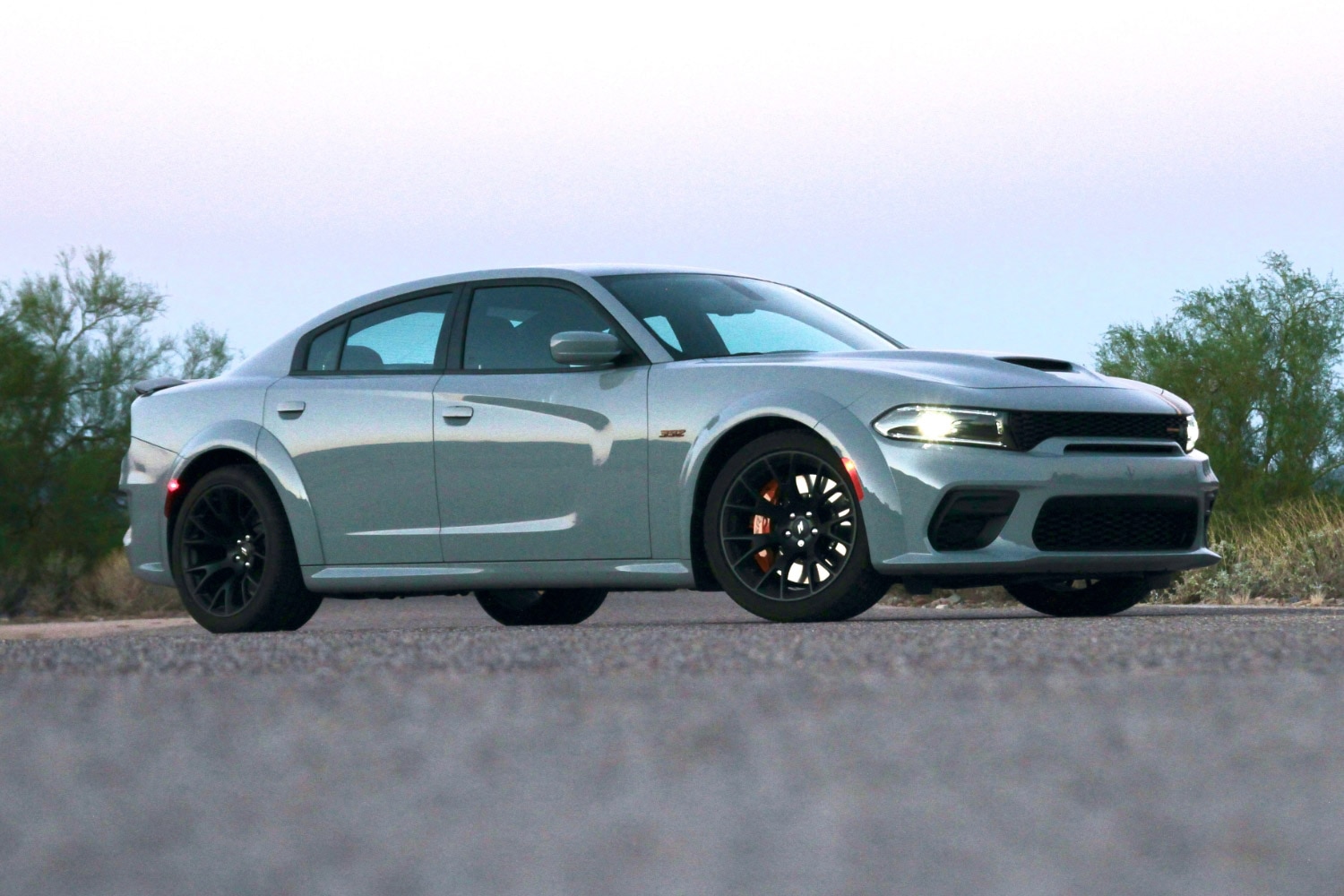 Jim Resnick
Jim Resnick
Dodge offers four driving modes in the Scat Pack Widebody: Auto, Custom, Sport, and Track. Auto sets the shocks, transmission, and throttle responsiveness in their most tame parameters for the waftiest of the four settings. Set up this way, the transmission delivered power softly at anything under half-throttle inputs, heightening smoothness.
Custom mode allows you to select your own preferred parameters regarding transmission shift points, traction assistance, suspension firmness, steering response, and whether the paddles are on or off. Sport mode quickens steering and throttle response, and allows a tiny bit of tire slip before it engages. Track mode is not intended for street use because it defeats straight-line traction control completely (though not stability control) and also firms up every parameter to maximum tautness.
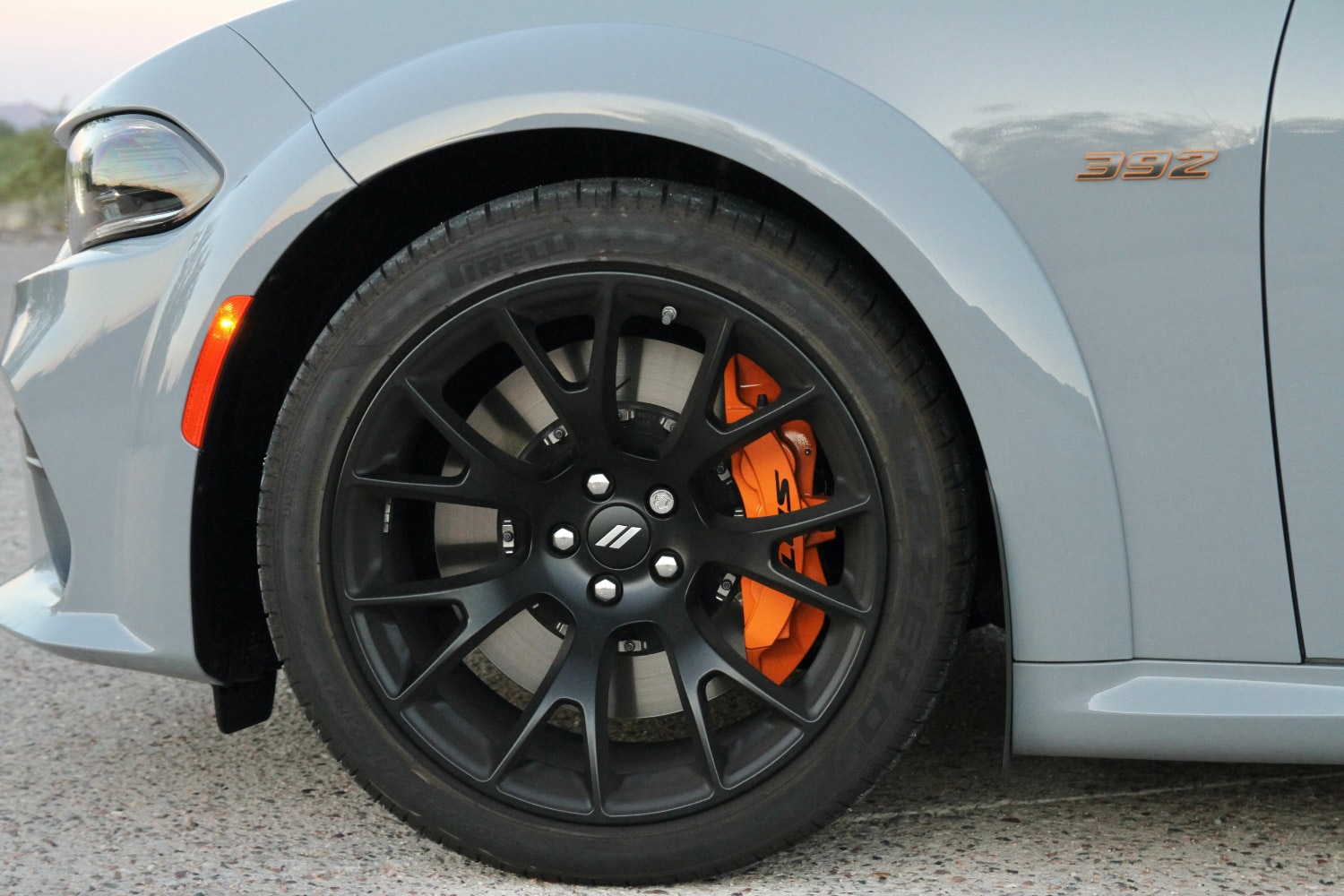 Jim Resnick
Jim Resnick
During my 73-mile evaluation loop, I left the car’s drive mode in Auto for about 80 percent of the route. For the twisties outside of town, I programmed Custom to set the suspension and traction in Street mode and the steering and transmission into Sport. I set it this way because the back roads of my route are pretty bumpy, and a Sport or Track-oriented suspension would simply be too stiff. The big surprise on back roads is that big swales and heaves in the road surface don’t fluster the nearly 4,400-pound Charger Scat Pack as long as you have the suspension set appropriately.
The EPA fuel economy rating for the Scat Pack Widebody is 18 mpg in combined driving. For an unscientific suburban slog over about 25 miles, I saw a low of 12.5 mpg. For my 73-mile loop, though, it returned 18 mpg precisely. I did measure highway-specific mileage at one point, which rose to a disappointing 21.4 mpg — the EPA estimates 24 mph on the highway — over a stretch of the Beeline Highway (Arizona State Route 87).
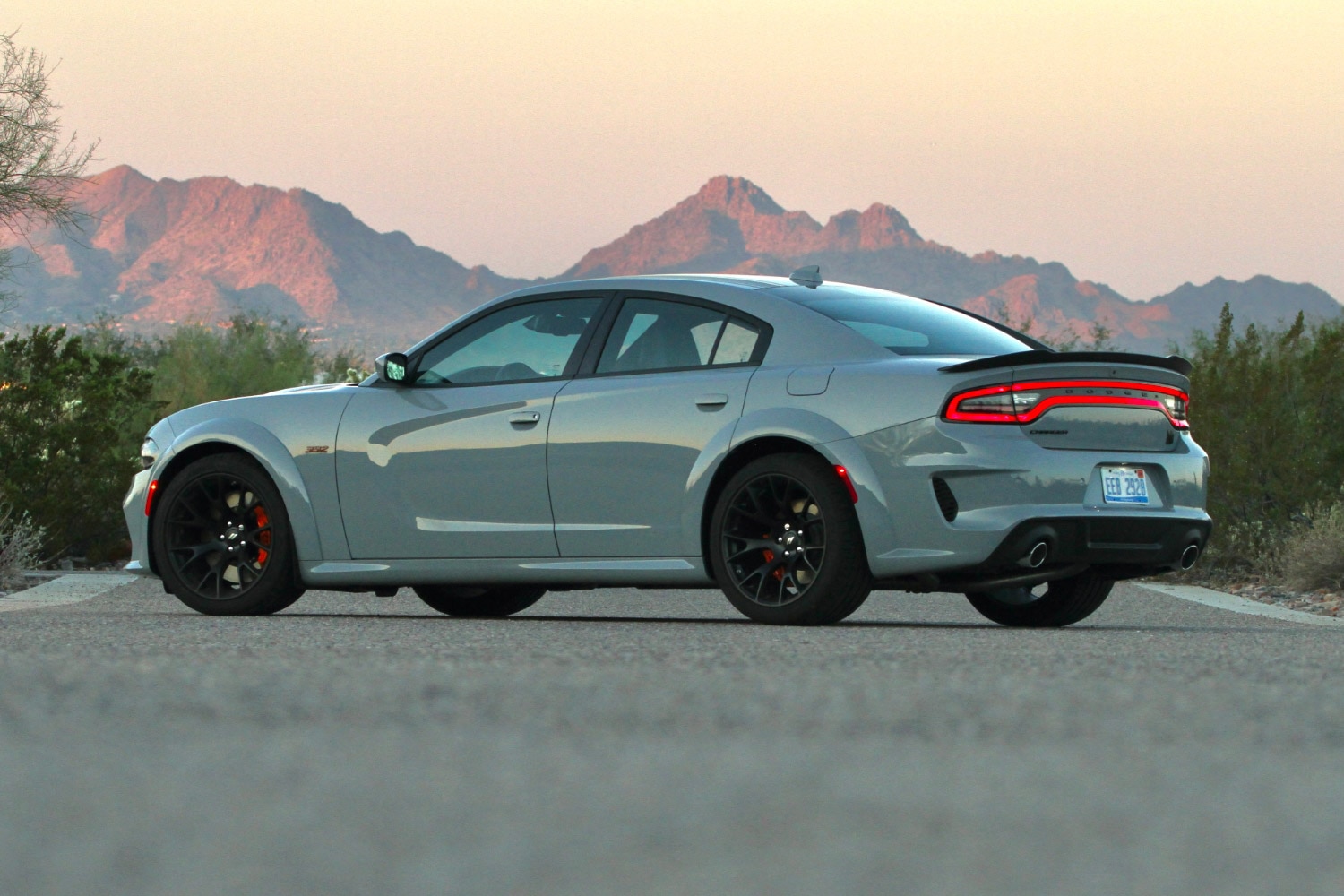 Jim Resnick
Jim Resnick
I wouldn’t expect any car weighing nearly 4,400 pounds to handle well, but this one does. Steering feel, which is electrically power-assisted rather than hydraulically, isn’t on par with some thoroughbreds in the sports-car class. Still, very few full-size, four-door cars can get around as well as the Scat Pack on a twisty road with a couple of good straightaways. Overall, given its capability, the Charger Scat Pack Widebody is a performance bargain.
Is the 2022 Dodge Charger Scat Pack a Good Car?
The Charger Scat Pack Widebody is an excellent choice for the enthusiast buyer who also wants to retain some everyday usability and practicality with its four doors, fairly generous interior, large trunk, and modest price compared to other large high-performance sedans. It’s also a nostalgic throwback muscle car with roots reaching back to the 1960s when times were simpler, more fun (perhaps looking through rose-tinted lenses), and carefree.
For the price, it’s hard to find another sedan that can touch the Charger Scat Pack on a performance level. You have to spend a minimum of $70,000 base price for the smaller BMW M3 or $104,000 for BMW’s larger M5 versus $56,000 for the Charger Scat Pack. Yes, the BMWs are more sophisticated, but if giggles are what you’re after, there’s plenty for less in the Dodge.
Written by humans.
Edited by humans.
 Jim Resnick
Jim ResnickFrom racing exotic sports cars, to ranking new cars, to peeling back layers of cover up in an exhaust emissions scandal, Jim has chronicled the automotive sector for decades. Jim has also worked inside the corporate headquarters of three carmakers, and therefore understands how the automotive sausage is really made. But Jim’s affinity for vehicles takes a back seat to finding the truth and the cultural implications of modern transportation. He has also lectured at universities to engineering and policy students and faculty on the industry’s relationship with legislation in the wake of the diesel exhaust emissions scandal several years ago. Put simply, Jim reports on autos, mobility, tech, car culture, and the traffic jam of topics within.

